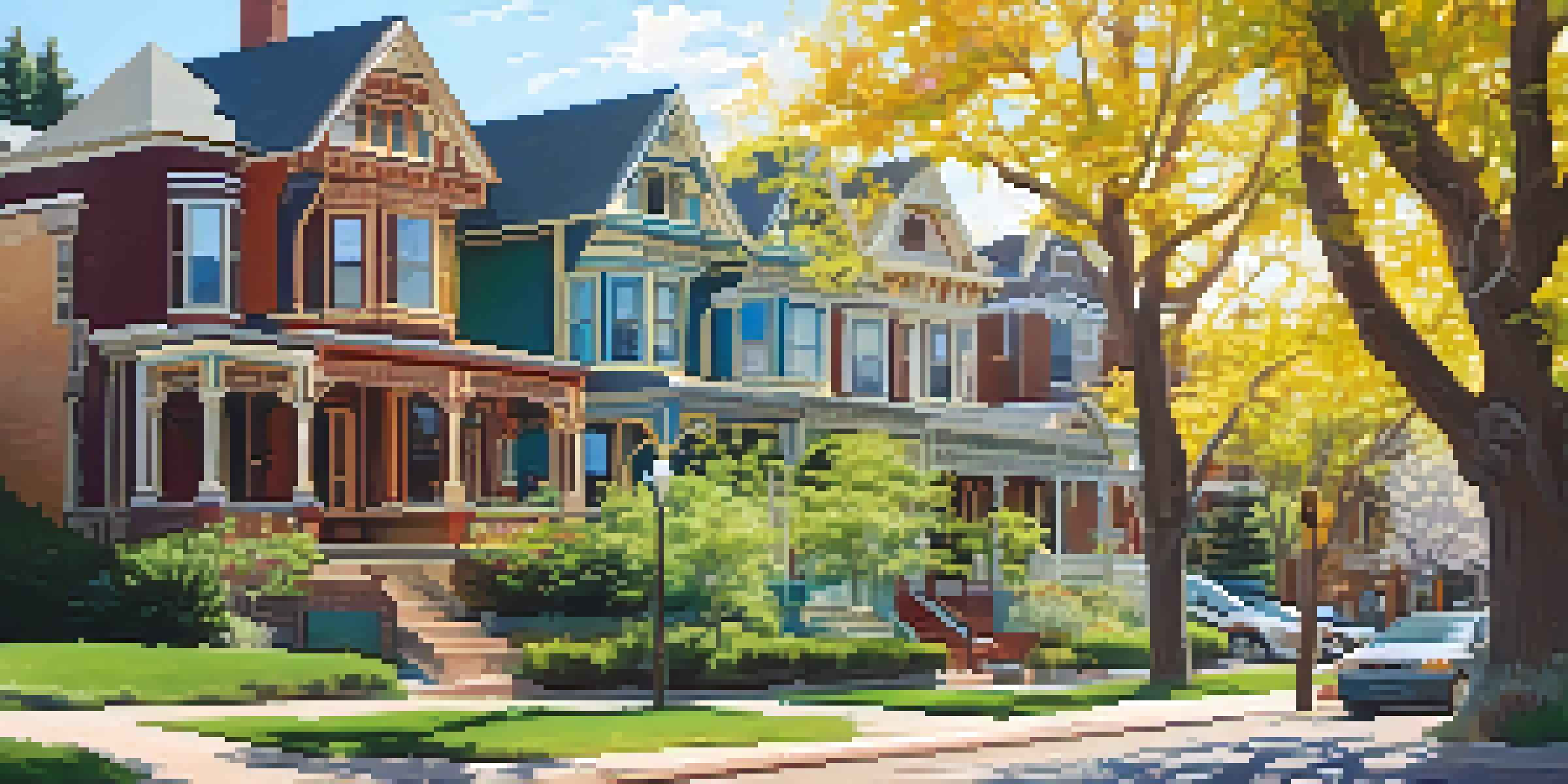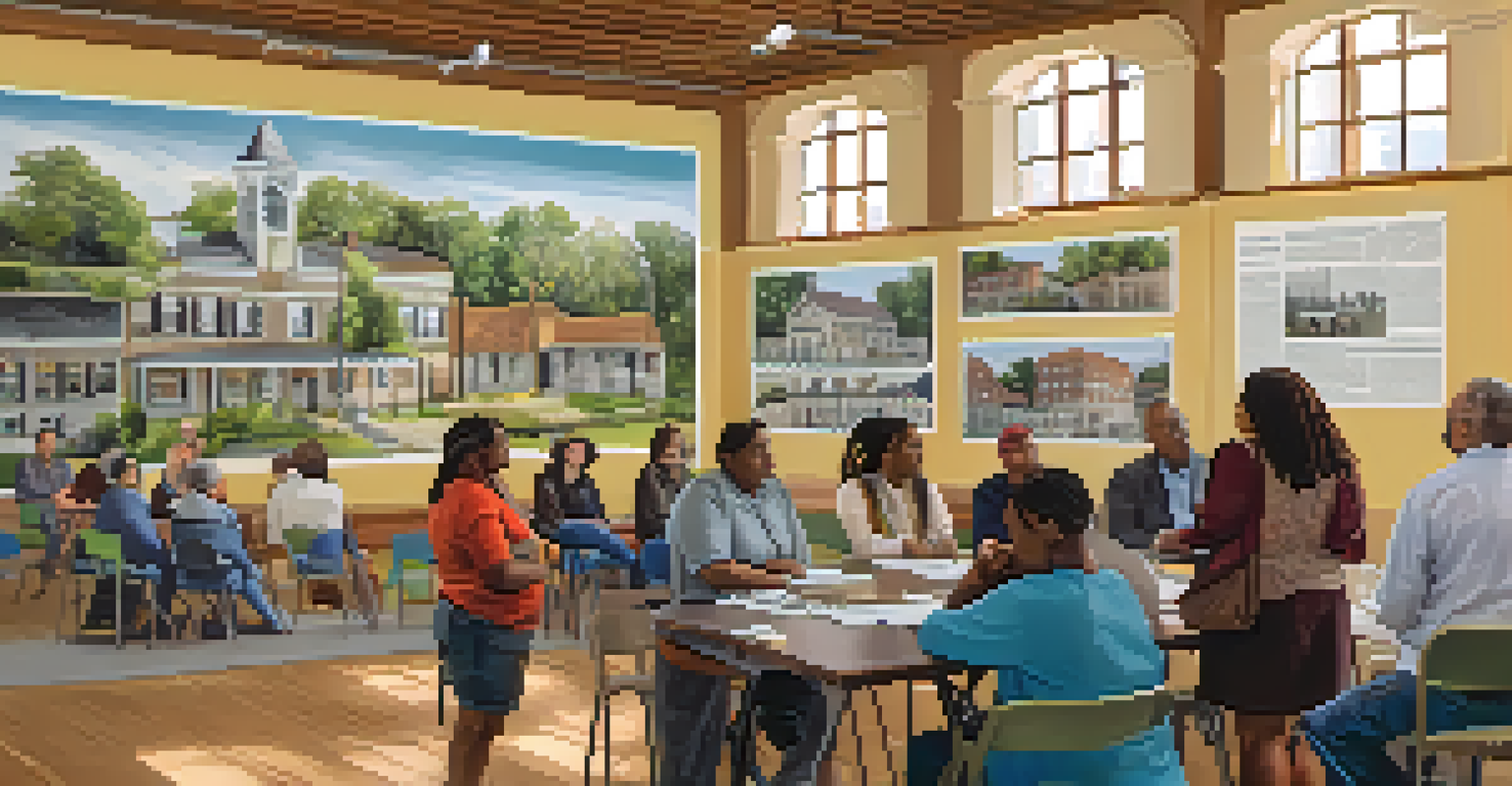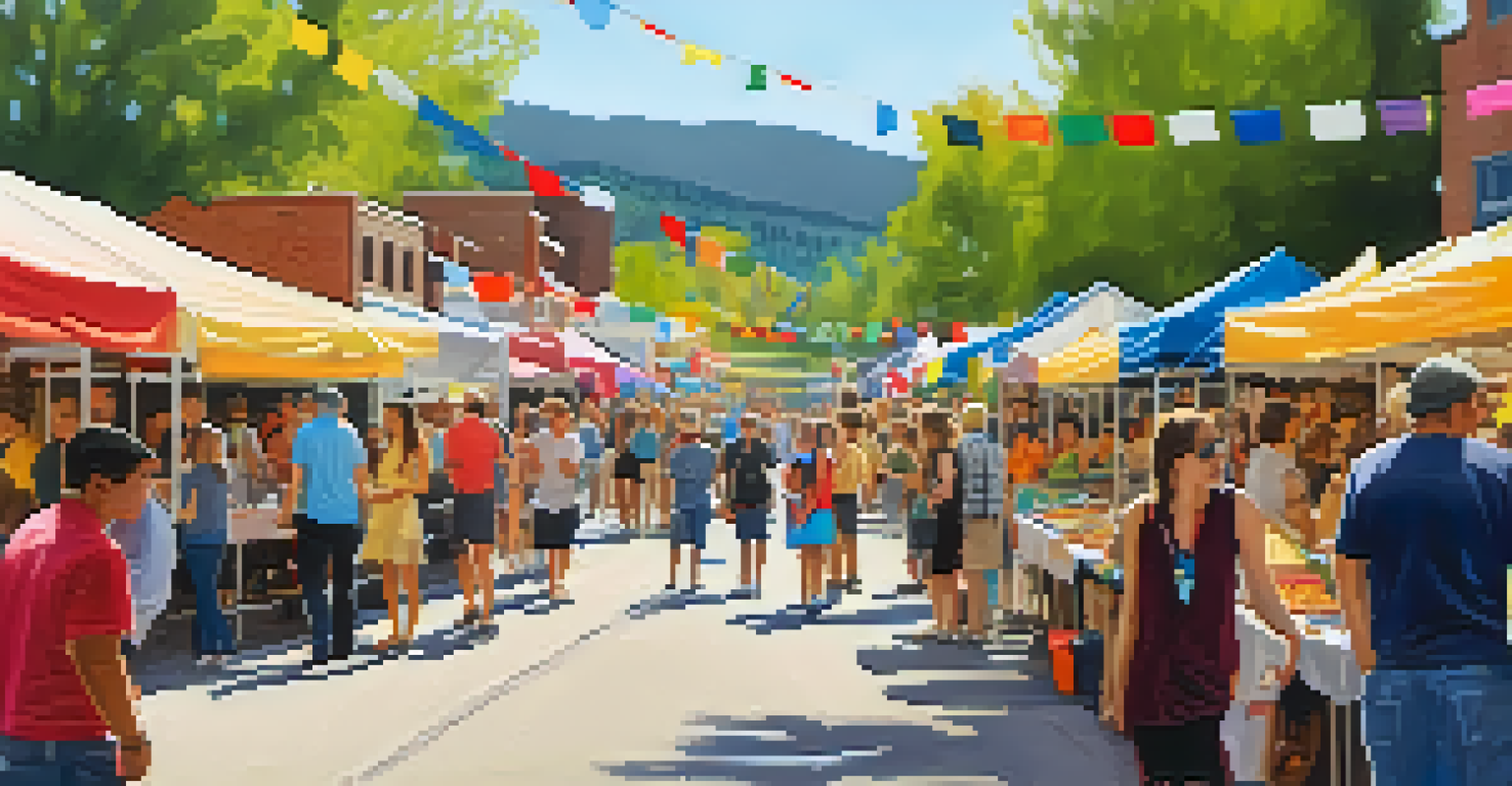Challenges Facing Boulder's Historic Preservation Districts

Understanding Boulder's Historic Preservation Goals
Boulder's historic preservation districts aim to protect the city's unique architectural heritage. These areas are characterized by buildings that tell the story of the city’s past, showcasing styles from different eras. The goal is to maintain not just the physical structures but also the cultural significance that they represent.
Preservation is not just about saving old buildings; it's about saving the stories they tell.
However, as the city grows and modernizes, balancing development with preservation becomes increasingly challenging. New businesses and residential projects often clash with the vision of maintaining historical integrity. This tension creates a need for clear guidelines and policies to navigate these competing interests.
Ultimately, the success of preservation efforts hinges on community engagement and support. Residents must understand the value of preserving their history, which can enhance local pride and contribute to a vibrant cultural landscape. Without this buy-in, efforts may falter, leading to lost opportunities to celebrate Boulder's unique heritage.
Economic Pressures and Development Challenges
As Boulder's population continues to grow, economic pressures mount on historic districts. Developers often see these areas as prime locations for new projects that promise higher returns. This can lead to proposals that threaten the very fabric of the neighborhoods, pushing for demolitions or significant alterations of historic buildings.

The challenge lies in finding a balance between economic growth and historical preservation. While development can bring in necessary resources and infrastructure, it can also erase the character that makes these districts special. City planners and preservationists must work together to create frameworks that protect historical sites while allowing for thoughtful progress.
Balancing Growth and Preservation
As Boulder develops, the challenge lies in harmonizing economic growth with the protection of its historic districts.
Moreover, the economic benefits of preserving historic districts should not be underestimated. These areas often attract tourism, which can be a significant source of revenue. By showcasing Boulder's historical charm, the city can create a sustainable model that prioritizes both preservation and economic vitality.
Community Engagement and Resistance to Change
Community engagement plays a crucial role in the success of preservation efforts in Boulder. However, there can be resistance to change, particularly when it comes to modifying historical structures. Some residents may feel strongly about maintaining the status quo, fearing that any alterations could diminish their neighborhood's character.
History is not a burden on the memory, but an illumination of the soul.
This resistance can lead to tension between preservation advocates and those who support development. It’s essential to foster open dialogues where both sides can express their views and find common ground. Workshops, town halls, and online forums can serve as platforms to discuss the importance of preservation alongside the need for modernization.
Ultimately, building a sense of community ownership over these historic districts can help bridge the divide. When residents feel invested in the preservation process, they are more likely to support initiatives that honor Boulder's past while allowing for future growth.
Legal and Regulatory Hurdles in Preservation Efforts
Legal and regulatory challenges are often at the forefront of preservation issues in Boulder. The process for designating a property as historically significant can be lengthy and complicated, leading to frustration among advocates. This bureaucratic red tape can delay necessary protections for buildings that are at risk of being altered or demolished.
Moreover, existing regulations may not be robust enough to protect all structures of historical importance. There may be gaps in the laws that allow for loopholes, making it easier for developers to bypass preservation efforts. This highlights the need for continuous review and updates to preservation policies to ensure they are effective in today’s rapidly changing landscape.
Community Engagement is Key
Successful preservation efforts depend on active community involvement and a shared understanding of the value of Boulder's history.
Advocates for historic preservation must work within these legal frameworks while pushing for reforms that strengthen protections. Collaborating with legal experts and city officials can lead to more effective strategies that ensure Boulder’s historical treasures are safeguarded for future generations.
The Impact of Climate Change on Preservation
Climate change presents an emerging challenge for Boulder's historic preservation districts. As extreme weather events become more frequent, older structures are increasingly vulnerable to damage. Preservationists must consider how to protect these buildings from the impacts of climate change, such as flooding, wildfires, and temperature fluctuations.
This necessitates a shift in preservation strategies to incorporate sustainability practices. For instance, retrofitting historic homes with modern energy-efficient technologies can help maintain their integrity while making them more resilient to climate impacts. It’s a delicate balance that requires innovative solutions to keep historical sites intact.
By addressing climate change proactively, Boulder can set a precedent for other cities facing similar challenges. The combination of historical preservation and sustainability can create a model that not only protects the past but also prepares for a more resilient future.
Balancing Tourism and Preservation Needs
Tourism plays a vital role in Boulder's economy, but it can also put pressure on historic preservation districts. As more visitors come to appreciate the city’s rich heritage, the influx can lead to wear and tear on historic sites. Balancing the needs of tourists with the preservation of these areas is a significant challenge that city officials must navigate.
One solution is to implement sustainable tourism practices that promote responsible visitation. This can include guided tours that educate visitors about the history and significance of the area, encouraging respect for the surroundings. By creating a sense of stewardship among tourists, Boulder can help protect its historic districts.
Education Fuels Preservation Advocacy
Raising awareness through education empowers residents to support and participate in the preservation of historic sites.
Additionally, engaging local businesses in preservation efforts can create a win-win situation. Local shops and restaurants can offer unique experiences that highlight Boulder's history, bringing in visitors while fostering a community spirit. This collaboration can help ensure that the benefits of tourism do not come at the expense of the city's historical treasures.
The Role of Education in Preservation Awareness
Education plays a pivotal role in fostering appreciation for Boulder's historic preservation efforts. By raising awareness about the importance of preserving historical sites, residents and visitors can better understand the value of these districts. Programs in local schools and community centers can help instill a sense of pride in the city’s heritage from an early age.
Workshops, lectures, and interactive events can also engage the wider community in preservation efforts. Collaborating with local historians and preservationists can provide valuable insights into the significance of various sites. When people are informed, they are more likely to advocate for and support preservation initiatives.

Ultimately, education empowers individuals to take action, whether through volunteering, attending city meetings, or simply spreading the word. By creating a knowledgeable community, Boulder can cultivate a robust network of advocates dedicated to preserving its historical legacy for generations to come.